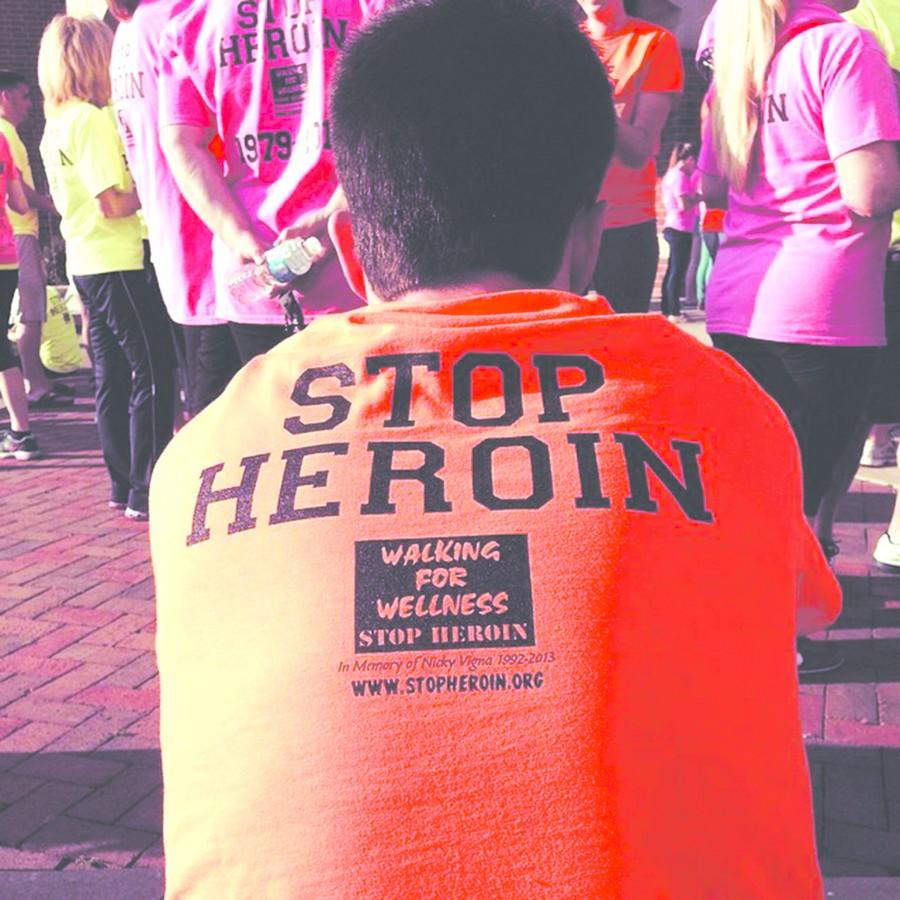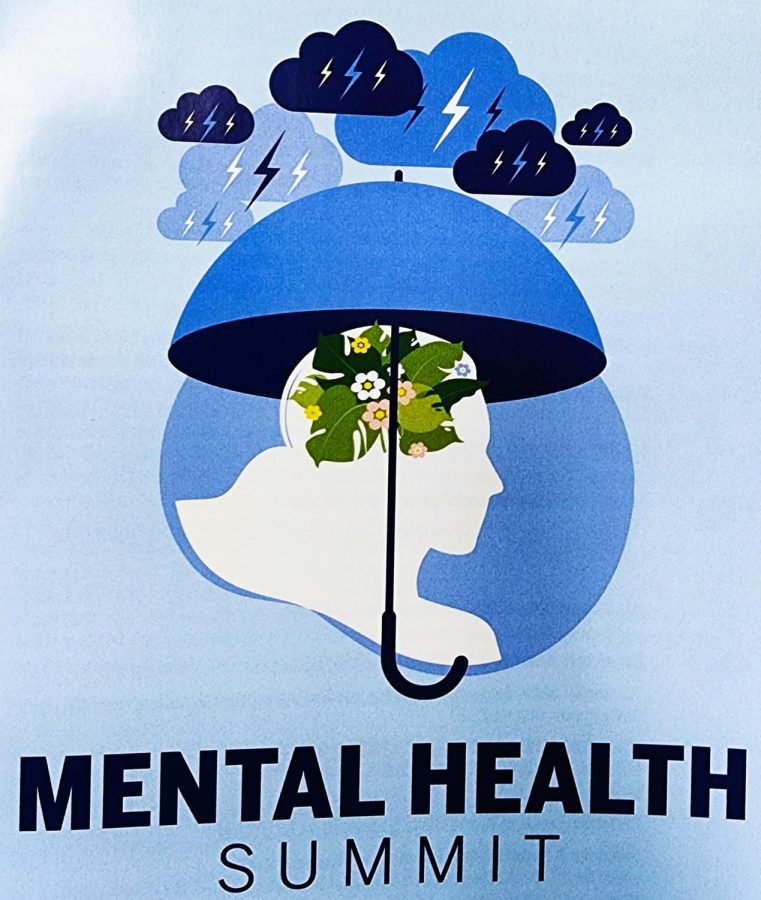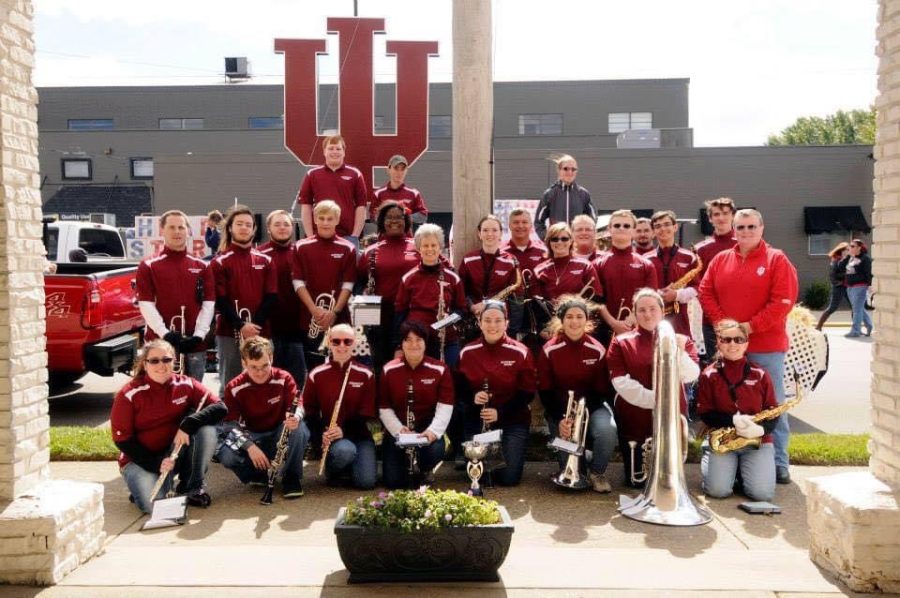Melissa Trauth didn’t know why her iPad and iPod were missing, or where her jewelry had gone, or why all the spoons and cotton balls had disappeared. But one day she got a call, and suddenly it all made sense — her oldest son had been stealing from her to buy heroin, and he had just died of an overdose.
Jonathan Trauth, 23, is one of the many victims of heroin abuse in Kentuckiana. According to a recent report by the Kentucky Injury Prevention and Research Center (KIPRC), overdose deaths due to heroin rose 207 percent between 2011 and 2012. According to the report, “presented counts and rates likely underestimate the full extent of overdose deaths in Kentucky.”
Jonathan had been living with his girlfriend, Tabitha, 21, and their 16-month-old son at Melissa’s home. They shared the one-story house with Melissa’s husband, Mike, and her three other children.
“We were just your normal family,” Melissa said.
Melissa said she always seemed to stay busy working a part-time job at Kroger, taking care of the kids, and participating in church and school activities.
“There was just a lot going on, and I didn’t see it, me or my husband didn’t see it,” Melissa said. “I never saw track marks or anything on his arms. I’m blind to all that. I wouldn’t even know. I mean now I know exactly what to look for, because I was forced to learn.”
Melissa said she eventually found out about her son’s addiction and tried to find him help, but they had been down this road before. Jonathan had been in and out of detox and counseling for opiates. His transition from prescription opiates to heroin, experts say, is common.
Crackdown on opiates leads to increased heroin use
Donnie Willis is the intervention services coordinator at Our Place Drug & Alcohol Education Services Inc., a New Albany-based non-profit drug prevention and intervention center. He said that heroin is an opiate, much easier to get ahold of, and much cheaper.
Both Kentucky and Indiana have recently put systems into place, KASPER in Kentucky and INSPECT in Indiana, to track who in their states are being prescribed opiates. This ensures that people aren’t using multiple physicians to get multiple prescriptions for pharmaceutical opioids. And as states begin sharing their data with other states, it will make it even more difficult to abuse the system.
But Willis said he doesn’t think physicians are intentionally abusing the system, and indirectly fueling the heroin epidemic. He said most of the time they are just uninformed.
“I’ve actually had physicians call me and ask me different questions about what should be prescribed, how much, and how often,” he said. “Because they’re trying to avoid being one of those doctors that people run to to get what they want.”
Willis counsels recovering addicts, and he said he hears about all the recent trends in the drug community, like what drugs mix well with others to give the user a better high. This allows him to inform physicians in the area about what drugs combinations to avoid prescribing.
According to the KIPRC report, the number of overdoses from pharmaceutical opioids in Kentucky has actually decreased by 8 percent, leading many to believe that the rise in heroin use and the crackdown on prescription opioids are connected. A 2002 Federal Justice Department report suggested that crackdowns could have such a result, especially if heroin is “available, pure and relatively inexpensive.”
No matter the drug, Melissa said her son continued to steal to feed his addiction, and things began to spiral out of control.
“He sat us down and told us he had to steal the stuff because his dealers wanted the money, and if he didn’t get them the stuff, they threatened to break into our house and steal what he owed them from us,” Melissa said. “We were afraid. I had to call the kids when they were home alone and check if they were OK and make sure Jonathan wasn’t around.”
Melissa said she eventually felt she had no other options left, and she decided to kick Jonathan out of the house. After living on the streets for two weeks, Jonathan decided to go back into another 30-day detox program.
“I think he was serious this time. He was really, really ready to,” Melissa said. “I think he had his share of almost dying. We found out that he had OD’d many times.”
But after Jonathan’s 30-day detox, Melissa said he relapsed and overdosed on heroin again. Only this time it was fatal.
Lack of resources puts strain on treatment programs
Melissa said she does not blame anyone for the death of her son, but she said she feels that the treatment facilities in Kentuckiana do not do enough to combat this rising problem.
“There are no centers here in Louisville or anywhere around Kentucky that deals specifically with heroin or opiates,” Melissa said. “All we have out there are these 30-day programs, and 30 days is not enough.”
Marla Highbaugh, director of communications at The Healing Place, a Louisville-based addiction recovery facility, said due to funding and insurance restrictions in Kentucky, most facilities can only offer 30-day programs.
“After 30 days you’re barely even getting the substance out of your body,” Highbaugh said. “Much less a lifetime, whether it be short or long, of the habits and a mindset that keeps you in that addiction. Just getting clean off of a substance is really, honestly often just a minor part.”
The Healing Place is one of the few places in Louisville to offer more than just a 30-day detox program. Because only 20 percent of its funding comes from the public sector and the rest from various partnerships and private donations, it is able to offer a six- to eight-month program free of charge.
The program is not specifically designed to treat heroin addiction, but Highbaugh said that 93 percent of the people attending were there for some form of detox treatment for heroin.
She said they don’t want anything to come in between people and treatment, but for many there are a few hurdles that are hard to overcome. At the Healing Place, patients must live on site in the campus and are not allowed to hold jobs or go to school for the entirety of the program. Also, they do not accept anyone with a dual mental diagnosis.
Nick Mullins, a nurse practitioner at Norton Hospital, said that most people who have drug addictions have other mental diagnoses.
“Even if it’s just anxiety or depression, things as simple as that, they need help, and that help can be life or death for somebody, whether it be withdrawals or even killing themselves,” Mullins said.
He said he also has a family member who struggles with an addiction to heroin. He said they had been in and out detox centers in Louisville but never any long-term program, until recently when they traveled as far as California to seek treatment.
“They have plenty of detox programs here [in Louisville] and plenty of programs that put you straight into halfway houses, but that’s the problem. Because after they hit that 30-day mark, they’re not doing any transition period,” Mullins said. “You get someone straight out of detox who’s only been sober for two to four days, then they’re going directly into these sober living houses, and if they mess up one time, they’re out and they’re back out on the streets.”
Even at the Healing Place, which Highbaugh said has a recovery rate five times greater than the national average, the relapse rate is still very high.
More than 50 percent who complete the 30-day detox decide to go into the six- to eight-month program, she said. Only 52 percent of those complete the program, and after leaving the campus 25 percent of those relapse within a year.
That’s only counting those who make it into the program in the first place. Due to demand, Highbaugh said Healing Place and many other centers have to put people on a waiting list. Mullins said this increasingly limited access to care is one of the major problems facing addiction treatment.
“They [the addicts] don’t have a lot of solutions, whether that’s financially, insurance-wise, or even getting a bed. If you call and say ‘Hey I need a bed,’ it will most likely be a few days,” Mullins said. “It’s hard enough to admit your problem, then you try and make that step and there’s all these barriers.”
Highbaugh said even though there is a waiting list, they do what they can to try and get those seeking treatment the help they need.
“If they have to wait, we offer them an overnight emergency shelter bed,” she said. “While they’re not physically in the program with a bed assigned to them, they can still stay here and eat here.”
While the Healing Place does offer a bed, free meals and intensive counseling, it does not offer any medical-based treatment. Highbaugh said this is because it is an AA-based program and believes replacing one substance with another won’t fix the problem.
But Mullins said that access to medicines like Suboxone, methadone, and naloxone (an opiate antidote) are crucial to recovery. Currently, medicines like naloxone are only covered by Medicaid under very specific criteria, which usually results in patients being forced to bear the burden of payment.
According to the KIPRC report, out of the $129.3 million spent on overdose hospitalizations in 2012 in Kentucky, Medicaid & Medicare covered $75.4 million. These numbers do not include the treatment of opiate-related illness such as hepatitis C, HIV or neonatal abstinence syndrome (babies born with an addiction).
Diane Hauge, director of the Louisville-based Seven Counties Jefferson Alcohol and Drug Abuse Center (JADAC), said it is true that there are not enough treatment resources here in Kentuckiana. Hauge said that local governments are limited in what they can do when faced with a problem of this scale.
“This is the kind of thing that has to be done at a state level or a federal level,” Hauge said. “Local government gets stuck because it’s their jails that are filled, and it’s their hospitals that are full of the overdoses, but they’re not the ones that make the laws.”
According to the Office of National Drug Control Policy, the proposed budgets for drug prevention and treatment have actually been steadily increasing, but with spending cuts in the federal government, many like Rep. John Yarmuth, who represents Louisville in the U.S. House of Representatives, said the money isn’t getting to the people who need it.
“Last year’s reckless, indiscriminate cuts to federal investments have damaged programs that support drug treatment, help people battle addiction and provide law enforcement with the resources they need to keep our community safe,” Yarmuth said in a statement. “Louisvillians are right to be frustrated with Congress over this deeply misguided policy, and I will continue fighting to repeal it.”
On the state level, Kentucky Attorney General Jack Conway said at a Capitol news conference earlier this year that $32 million collected from lawsuit settlements with two major drug companies will be used to help expand drug treatment here in Kentucky.
But facilities are still struggling to cope with the expensive medication used to treat this addiction, as well as other factors such as overcrowding, because opiates are a much faster addiction than more traditional addictions like alcohol.
“They’re not spreading out, at five, 10, 15 years before they really get bad enough they need treatment; it’s all happening in a one- to three-year period,” Hauge said.
Hauge said that insurance coverage isn’t fitting the need either, because insurance companies usually only pay for the detox and not long-term rehab; and long term rehab is exactly what youth struggling with addiction need.
“When you start an addiction in your late teens or early 20s, you don’t have any life skills to fall back on” Hauge said. “So you have these young adults whose relapse rate is running at 90 percent, so that means they’re keeping these treatment facilities full because they have to keep coming back.”
Life after addiction
There is no silver bullet to addiction, Hauge said.
“People don’t understand the whole concept that addiction is a chronic illness and there is no cure,” Hauge said. “Once you have it, you’ve got it. And you’ve got to do self-care the rest of your life.”
That is a thought that still haunts Melissa every day.
“In a way, I know it sounds horrible I guess, but at least Jonathan doesn’t have to fight it anymore,” she said. “Sometimes I have to sit and think, ‘well maybe that’s God’s way of putting him out of his misery,’ but then I quickly think, ‘no that can’t be right.’”
Because of a lack of resources, Melissa said, families like hers are just left to do things on their own.
“Financially he put us through a lot. We are still struggling with everything he put us through financially,” she said. “All of his hospital bills and doctor bills and all that we’re stuck with now.”
The harm of addiction does not stop after death. After hearing stories of her grandson being stuck by needles, Melissa said she decided to call Child Protective Services.
“They wouldn’t listen to us, so I told them [my grandson] doesn’t have a choice in this and he doesn’t have anybody to stand up for him. So I stood up for him and got him out of the situation,” Melissa said.
She said she later found out that her son Jonathan was positive for Hepatitis C. She fears that now her grandson may be positive for the disease as well. According to the KIPRC report, 22 percent of people hospitalized for heroin abuse were also treated for Hepatitis C in 2012.
For now Melissa said she is doing what she can to tackle this taboo issue, helping those struggling with the addiction that took her son, like Tabitha, who is now going through treatment at the Healing Place. Melissa said she is helping to raise awareness by organizing walks with the Facebook group “Walking for Wellness: Stop Heroin.”
“I can’t help my son. I can’t do anything to help him, but maybe I can help someone else,” Melissa said. “I guess that’s why I’m fighting for Tabitha now. Jonathan would want us to help her out. For one thing, it’s the mother of his child. We’re together with her for the rest of our lives now because of [my grandson]. So I’ll just do what I can to help whoever I can.”














